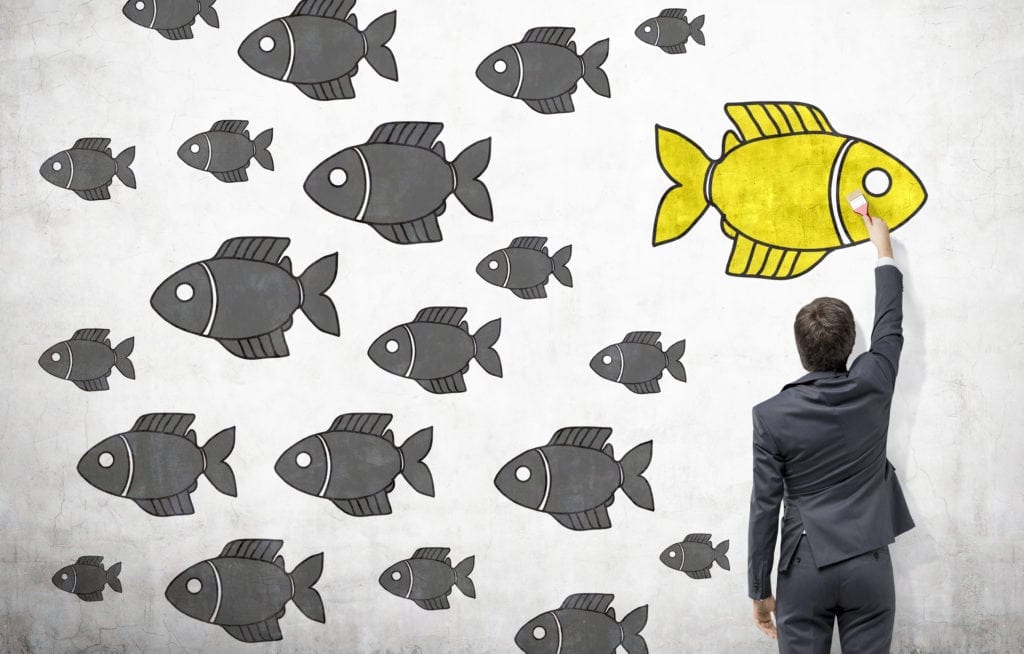Nature has a lot to teach us about the importance of understanding context. In nature, context is unique.
For example, soil has a genetic memory that knows what kind of plants grow best in their soil, with the moisture and exposure in its microclimate. We experience context in nature by the different tastes wine has by region, even though they are grown from the same grapes. The soil and its nutrients influence grapes and affect the taste of wine made from them.
Nature is made up of complex dynamic ecosystems. As a result, microclimates reflect the uniqueness of the contributing species, plant life, climate, and nutrients that exist in that microclimate. Humans, like nature, are also unique. Our fingerprints and retinas are unique, and by extension, organizations made up of people are also unique.
In the 20th century, we didn’t acknowledge that organizations were different and unique. We focused on replicating models and management trends across organizations. The thinking behind this strategy was the assumption that all organizations are the same at their core, despite different missions, products, and services. Therefore, a strategy that works in one organization, would work in others.
From Mechanistic to a Biologic Paradigm
The 21st century is shifting away from a mechanistic paradigm to a biological one. Instead of mass production, we are seeing mass customization. Cancer treatments are being tailored to the genetic uniqueness of an individual. We can special order M&Ms with our initials or customize our computer hardware and software. This kind of customization would have been unheard of in the 20th century.
A biological paradigm will eventually seep into our thinking and affect the design and leadership of our organizations. Here are some ways our thinking needs to change to fit with the shift from a mechanistic to a biological paradigm in our organizations.
In a biological paradigm, the thinking of an industrial framework would be replaced by other concepts that reflect more of a biological worldview. It would look to nature and the study of life and living systems to think about how to produce things, structure our organizations, and lead. Some key shifts include:

1. Perfectibility to Functionality and Best Fit:
Living systems are constantly evolving and adapting. The criterion for effectiveness is a focus on functionality and fit with the environment, allowing an organism to mutate to survive. It lets go of the search for perfection that a mechanistic paradigm pursues.
2. Universally Applied Best Practice to Emergent Practice Designed to Fit a Unique Context:
The industrial paradigm looked for a “one size fits all” framework. The concept of best practices assumes that once a best practice is identified it can work in any context. The biological paradigm understands that in living systems context matters. What works in one ecological region doesn’t work in another without significant additional resources.
For example, flowers that bloom in a warm climate need extra protection in a cold climate, like greenhouses that require extra energy and care. One of nature’s designs is that it demands local expertise because they carry knowledge about their unique context.
3. Mass Production to Mass Customization:
Mass production was a strategy used in an industrial paradigm to scale the quantity and profits of production. In nature, uniqueness influenced by context is normal. The science of biomimicry looks to nature to understand how to design products that respond to the uniqueness embedded in all of living systems. YouTube and Facebook are examples of mass customization. They both create a cooperative platform that allows diverse individuals to create their own page or video that reflects their uniqueness. Like nature, they reward cooperation and bank on diversity to sustain interest in these platforms.
4. Stable Structures to Adaptability, Flexibility, and Agility:
An industrial paradigm is based in a hierarchical organizational structure that ensures stability and it works for stable environments. However, nature is constantly adapting and evolving, and it is designed with interdependence and connectivity. Organizations that are designed to leverage networks can be more flexible and agile. This agility is needed in the turbulence of today’s external environment.
Wikipedia is an interesting example of something that is designed from a biological paradigm. It is open-sourced and allows multiple people to shape the content. The content is constantly evolving and adapting to the changes in meaning and understanding from our experiences that influence our lives. The goal of Wikipedia is one of functionality, not perfection. Its’ design reflects a living system instead of the stability of a Webster’s dictionary.

Leading from a Unique Perspective
When we lead from the assumption that our organization is unique, we invite ourselves to learn about our organization’s culture and subcultures. We assume that what works in one place, may need to be adapted to work effectively in another place. Our focus would be on scaling ideas and innovations across our organization and depend on local expertise and self-organizing to develop how the ideas would be applied locally.
Standardization would take on a different value in our organization. When we lead from the assumption that everything is the same, we place a high value on standardization. When we standardize something, it adds to cohesiveness and predictability in the organization. However, if we assume uniqueness we would approach organizational cohesiveness differently. We would see guiding principles and allow the departments to identify how they were going to apply these principles to their unique corner of the organization.
These ideas may seem radical and hard to manage; however, nature has no problem doing this. One thing we can learn from nature is that it is built on core design principles that provide lots of latitude for diverse applications. For example, if a tree has an operating “rule” that for every branch there are two branches of equal length, we would see a symmetrical tree. If the operating “rule” was for every branch two branches of unequal length would grow, we would see an asymmetrical form as it grows. Within these two simple operating rules, there are an infinite variety of tree species that have shapes created from these deep operating principles.
As leaders, we would need to start intentionally designing our strategies and actions from the assumption of uniqueness. We lead uniquely by design!
Dr. Kathleen E. Allen writes a blog on leadership and organizations that describes a new paradigm of leadership that is based in lessons from nature and living systems. She is the author of Leading from the Roots: Nature Inspired Leadership Lessons for Today’s World (available for digital download now and in print on September 4, 2018) and President of Allen and Associates, a consulting firm that specializes in leadership, innovation, and organizational change. You can sign up for her blog on her website: www.kathleenallen.net







Exciting to think about organizational application!
Languages, too, have prescriptive and descriptive grammar. Prescriptive rules are set rules of grammar that are given, and descriptive rules show how people talk in the vernacular. As languages develop over long periods of time, common usage becomes accepted into the grammatical structure of the langue, such as dropping the word “whom” from the english language, and replacing it with ‘who’.